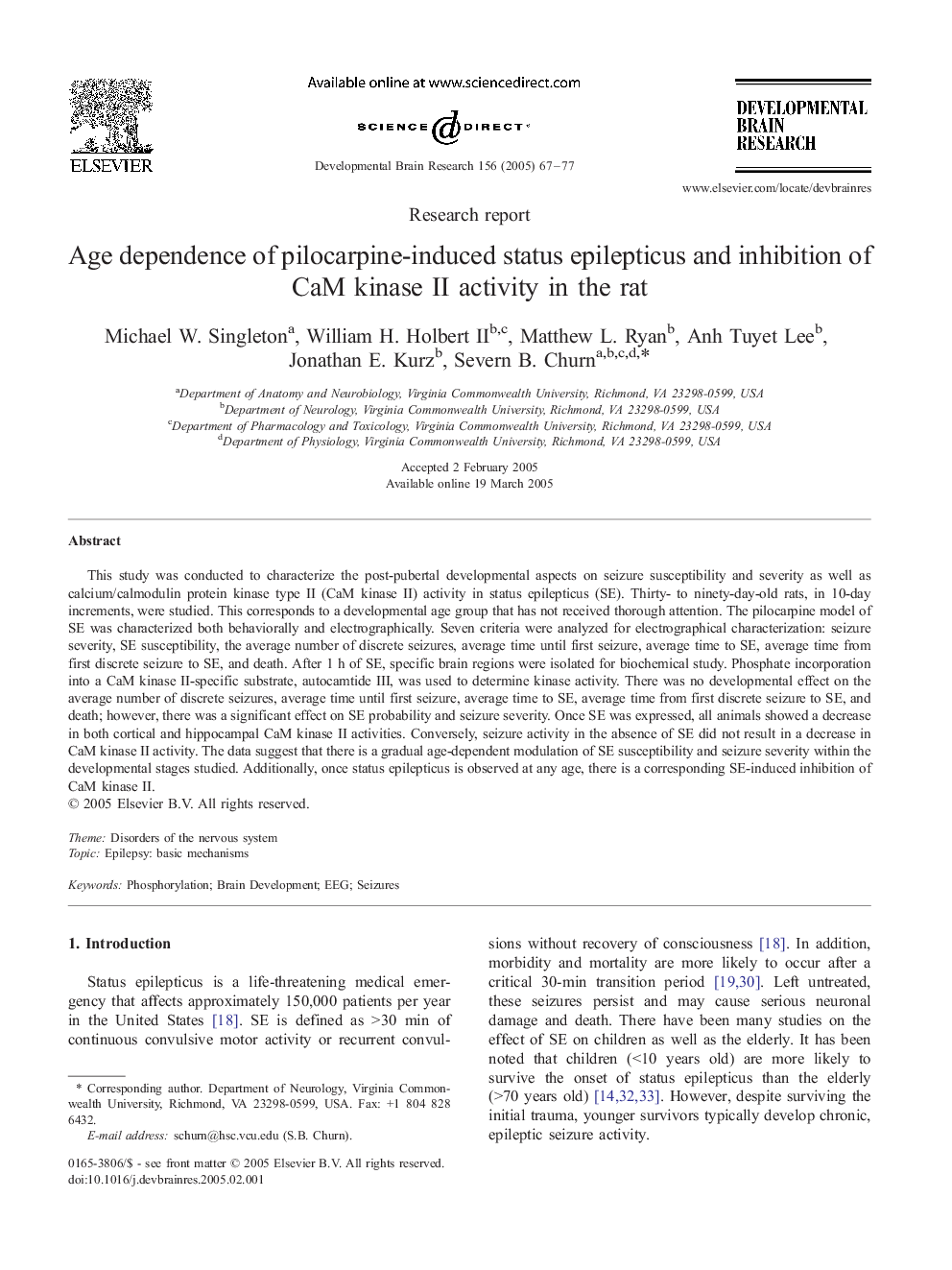| Article ID | Journal | Published Year | Pages | File Type |
|---|---|---|---|---|
| 9414676 | Developmental Brain Research | 2005 | 11 Pages |
Abstract
This study was conducted to characterize the post-pubertal developmental aspects on seizure susceptibility and severity as well as calcium/calmodulin protein kinase type II (CaM kinase II) activity in status epilepticus (SE). Thirty- to ninety-day-old rats, in 10-day increments, were studied. This corresponds to a developmental age group that has not received thorough attention. The pilocarpine model of SE was characterized both behaviorally and electrographically. Seven criteria were analyzed for electrographical characterization: seizure severity, SE susceptibility, the average number of discrete seizures, average time until first seizure, average time to SE, average time from first discrete seizure to SE, and death. After 1 h of SE, specific brain regions were isolated for biochemical study. Phosphate incorporation into a CaM kinase II-specific substrate, autocamtide III, was used to determine kinase activity. There was no developmental effect on the average number of discrete seizures, average time until first seizure, average time to SE, average time from first discrete seizure to SE, and death; however, there was a significant effect on SE probability and seizure severity. Once SE was expressed, all animals showed a decrease in both cortical and hippocampal CaM kinase II activities. Conversely, seizure activity in the absence of SE did not result in a decrease in CaM kinase II activity. The data suggest that there is a gradual age-dependent modulation of SE susceptibility and seizure severity within the developmental stages studied. Additionally, once status epilepticus is observed at any age, there is a corresponding SE-induced inhibition of CaM kinase II.
Keywords
Related Topics
Life Sciences
Neuroscience
Developmental Neuroscience
Authors
Michael W. Singleton, William H. II, Matthew L. Ryan, Anh Tuyet Lee, Jonathan E. Kurz, Severn B. Churn,
